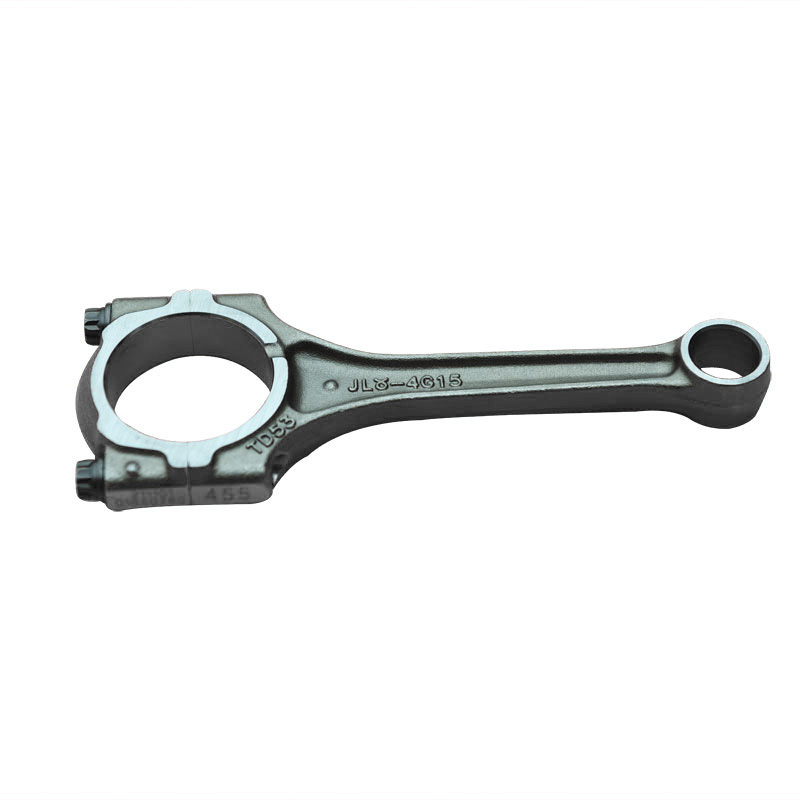Here are key points about connecting rods
2023-12-20
A connecting rod is a critical component in internal combustion engines that connects the piston to the crankshaft, converting the reciprocating motion of the piston into rotational motion for the crankshaft. It plays a crucial role in the engine's operation and is subject to significant mechanical stress. Here are key points about connecting rods:
1. Function:
- The primary function of a connecting rod is to transfer the linear motion of the piston to the rotational motion of the crankshaft. This conversion of motion is essential for the engine's power generation.
2. Material:
- Connecting rods are typically made from high-strength alloy steel or aluminum alloy, depending on the engine type and application. These materials offer the necessary strength and durability to withstand the forces and stresses in the engine.
3. Design:
- Connecting rods have a specific design that includes a small end, which connects to the piston through a wrist pin, and a large end, which connects to the crankshaft. The design may vary based on the engine's configuration (inline, V-type, or opposed).
4. Small End and Piston Connection:
- The small end of the connecting rod is connected to the piston through a wrist pin or piston pin. This connection allows for the pivot and reciprocating motion of the connecting rod as the piston moves up and down.
5. Big End and Crankshaft Connection:
- The big end of the connecting rod connects to the crankshaft through a bearing cap. This connection allows for the transmission of the linear motion of the piston to the rotational motion of the crankshaft.
6. Forging and Manufacturing:
- Connecting rods are often manufactured through forging, a process that involves shaping metal through the application of force. Forging enhances the strength and structural integrity of the connecting rod.
7. Machining:
- After forging, connecting rods undergo machining processes to achieve precise dimensions and surfaces. This includes machining the bearing surfaces, small end, and big end to meet tight tolerances.
8. Balancing:
- Connecting rods must be carefully balanced to ensure smooth engine operation and minimize vibrations. Balancing is crucial for reducing wear and tear on engine components.
9. Performance and Stress:
- Connecting rods experience high stress during engine operation, especially in high-performance and high-revving engines. They must withstand the dynamic forces generated by the reciprocating and rotating motion.
10. Aftermarket and Performance Applications:
- In aftermarket and performance applications, connecting rods may be upgraded to materials like titanium or high-strength alloys to handle increased stress levels associated with modified engines.
11. Maintenance and Inspection:
- Connecting rods are subject to wear over time. In engine maintenance, connecting rods are inspected for signs of damage, wear, or misalignment. If necessary, they may be replaced.
12. Automotive and Other Applications:
- Connecting rods are primarily associated with internal combustion engines in vehicles, but similar principles apply in other applications such as industrial engines, marine engines, and power generators.
Connecting rods are crucial components in internal combustion engines, and their design and material selection are critical for the reliable and efficient operation of the engine. Advances in materials and manufacturing processes continue to enhance the performance and durability of connecting rods in various engine applications.



